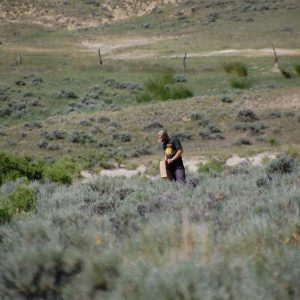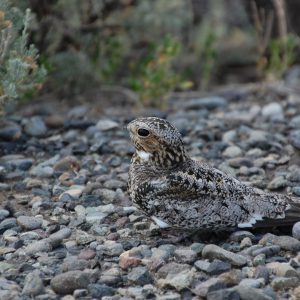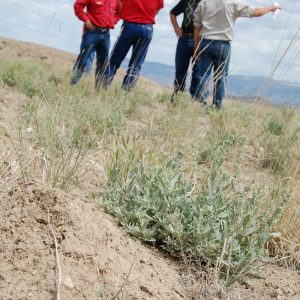CLM Workshop Seminar
The best time to go to the Chicago Botanic Garden would be in early summer. Fortunately! That was the time the CLM Workshop/Seminar was! CLM interns from all over the United States came together in Chicago to learn about their future/current job! My fellow intern Dan and myself had to take a flight out of Boise, ID to Chicago, IL with a layover in Phoenix, AZ. We got to the hotel around 12 to 1 o’clock in the morning. We were definitely tired, but prepared for the next day!
Each day I would wake up very early and eat a healthy breakfast of Applejacks and the fruit of the day. From the hotel, I would travel 20 minutes to the classroom located at the Chicago Botanic Gardens. I met many interns the first day and had a great time! The day was pretty humid, but everyone was in a good mood! One part of the day all the interns went to the bridge to have their picture taken for the CLM website. That was where I met the interns from the state of Oregon! I got to meet a lot of people who had similar interests and backgrounds. I also got to meet Steven who had the same level of enthusiasm towards bird watching!

The CLM Oregon Interns!
Throughout the whole week we were constantly busy in a good way! The lectures that were given were very insightful and the lunches were amazing! My favorite part of the seminar/workshop was going outside to learn monitoring techniques or identifying plants. Krissa and Wes, with the help of their staff, made sure everything ran smoothly. I did enjoy working with the compass/GPS field activity or learning various techniques of field monitoring. Another favorite activity was going to the prairie and keying out different plant families. Our group found a large number of plant families, but more importantly we worked with the taxonomy key to help us distinguish between similar species of plant.
After attending our daily workshop, I would go home to meet with my family and relax before returning to the hotel. One day we were warned that there were severe thunderstorms entering the region. Krissa told us how to prepare for a storm event, if it occurs. When I went home for the day I watched the severe rain/wind storm enter the Chicago region. The serious parts of the storm occurred to the north and south of the Chicago region.
I said my good byes on the final day. That week had been wonderful! At first I had my doubts of attending, but I am glad I did go to the workshop. Not only did I learn almost everything there was to be an intern working for the Federal Government, but I made many friends and developed good networking connections. Also!!! I finally got to meet Krissa and Wes!! (Thank you so much for answering my emails and calls! ^_^)
I left for the airport on Saturday and met with Dan to catch our flight. We were in the terminal waiting for the plane to board. There were three flights leaving at the same time including our flight. The intercom had two to three people talking all at once for boarding. I sat there at the terminal waiting for the plane to board. Eventually, I noticed the terminal becoming desolate. I looked for my friend Dan and noticed he was not around. I went up to the people and asked about my plane ride. Apparently it already took off and I was stuck in Chicago!!! O_O;; No worries! I caught the first flight out of Chicago the next day and made it safely to Burns, Oregon! ^_^
(There was a lot more that happened at the seminar, but I gave the cliff notes version…)
ES & R Monitoring
My main job for the Burns/ Hines BLM was ES & R monitoring. Most of you are probably thinking, “What is ES & R monitoring?” This was a type of monitoring where we would go to areas that were consumed with fire the prior year and we would monitor the plant diversity of the landscape presently. Our main goal was to go to areas that have been seed treated by drill seeding or aerial seeding. We used a Point Line Pace 180 Sampling Method to determine the species diversity after the seeding. We were seeing if the seed/vegetation treatment worked. Many of the sites showed effective results from the drill seeding, while some sites looked like they were completely desolate.
We took a ground and landscape photo of the plot we were working with. We also took pictures of the cardinal directions around the plot to help future monitors find the area in the future. The process and guidelines were very specific, but the learning curve was not too bad. I learned a majority of the plants already and our boss constantly aided/ directed our way. I had to learn both the scientific name and the USDA plant symbol name. My geology background also aided in monitoring the erosion aspect of each site, even if the majority of the sites were stable.
The first treated sites we looked at were on the Miller Homestead Fire. This was a major fire that occurred. Some sites did have a lot of Bromus tectorum (cheatgrass/ BRTE), but there were other sites where the annual grass was hardly present in the landscape. Cheatgrass is a major problem, because they help the fire spread rapidly. After a fire, the cheatgrass will out compete many of the native plants and develop a monoculture of annual grasses in the landscape. Anyways! We also would encounter many different types of sagebrush (Artemisia spp.) throughout our monitoring. A majority of the sites we visited were drill seeded, so we got to see the same grasses and plants over and over again. Even though the plants were repetitive on each site, this would help us learn each of the species common in our area. We were specifically looking for Agropyrum cristatum (creasted wheatgrass/ AGCR), which was an introduced grass used to establish a site and out-compete some of the unwanted plants. There were many sites that were like a mosaic, where previous native plants were present and unaffected by the fire. Penstemon spp. were some of my favorite flowers to monitor, but they were hard to come across sometimes. We even got a visit from a rattlesnake (Mr. Rattles), but it was interested in standing still and cared less about our monitoring session. V_V

Mr. Rattles is not amused….
Overall, the ES&R monitoring is not for the faint of heart! Hail, dust storms, heavy rains, severe heat, rattlesnakes, deer flies, bulls, Sarcobatus vermiculatus (greasewood/SAVE4), and dust devils were very common! BUT! For the Burns/ Hines BLM interns, just a walk in the park! 😉 We adapted to the harsh conditions and evolved our way of monitoring to deal with all of the tricks nature threw at us! This position has been extremely rewarding and I enjoyed every part of it…except the part where I would fall into some greasewood and get stuck… >_>

Storm chasing dust devils in the Alvord Desert. (Joking! We were just going to our next site!)
Aroga Moth
Another part of our internship was monitoring the Aroga Moth aka the sagebrush defoliator aka Aroga websteri! This moth is very mysterious and many people probably never heard of this moth before. They are a very small moth that is very active at night. The caterpillars of this moth cause the damage to the sagebrush. They would hatch out of their egg and go to the new growth on a sagebrush and burrow into the plant. The tips would show webbing and signs of defoliation. Usually, this type of insect varies from year to year in terms of outbreaks. Recently in our district, it has been more than 10 years of non-stop activity. This is starting to worry us. Sagebrush infected with these caterpillars would die in a couple of years creating fuel for potential fires. There was not a lot of research on this insect and no one has really seen them/ or studied them. Also there is no way to really treat this kind of insect without spending a large sum of money.

This is the caterpillar for the Aroga Moth….Small little bugger.
Anyways! We had two monitoring days where a state entomologist and a pathologist would join part of the Burns/Hines BLM to collect information on this moth. Dan and I went on the first day. Of course it was raining buckets, but that did not stop us! >:) The BLM staff and scientists collected many samples of the aroga moth caterpillar. Surprisingly, there were a lot of caterpillars when there was supposed to be chrysalis. The delay in development could be caused by the recent frost we had the week before. We went by the Steens and the southern part of the district. On the Steen Mountains, we were in the clouds looking for signs of the moth. It was epic!!!
Misadventures
On my time off of work, I went to many rockhounding sites. I went to the Narrows to find petrified wood, agate, degraded opal, and jasper. This place had many amazing specimens, unfortunately they had a lot of deer flies, rattlesnakes, and greasewood shrubs. The other place I went to was Glass Buttes!! This place had all kinds of obsidian!!! I got fire obsidian, red obsidian, lace obsidian, black obsidian, silver sheen obsidian, rainbow obsidian, and other sheen obsidian. The roads are a little rough and one would have to watch out for bulls…the bulls like to strut their stuff, while the other cows don’t give a crumb. (Sigh…males…<_<) I went during a rain storm, which helped cleaned the dirt off the obsidian allowing me to see the sheens. I heard they had over 100 different kinds of obsidian on these buttes! O_O
One of the days our boss signed us up for many training seminars. Dan and I had to attend blood born pathogen, hazmat safety, and defensive driving. When Dan and I entered the auditorium, we noticed something was off… Everyone was wearing green pants, a navy long sleeve shirt, and had a wallet full of safety information. We were with 100 firefighters! At least I wore olive colored pants, so I was not too out of place. The training was alright. Our boss came to some of the sessions too! Many of the sessions were drier than the Alvord Desert in July, but we passed each of the tests! Now we can drive our truck to our monitoring sites!!! This was super turbo neo ultra hyper mega multi alpha meta extra uber AWESOME! Now we do not have to be escorted around! Plus, we got our ATV licenses allowing us to drive in the back country to our monitoring sites!
((On a side note….. having a Dairy Queen Blizzard©®™ after a hard week of work is great…just saying…>_>))

Green Gentian (Frasera spp.), Forb of the Week!





























